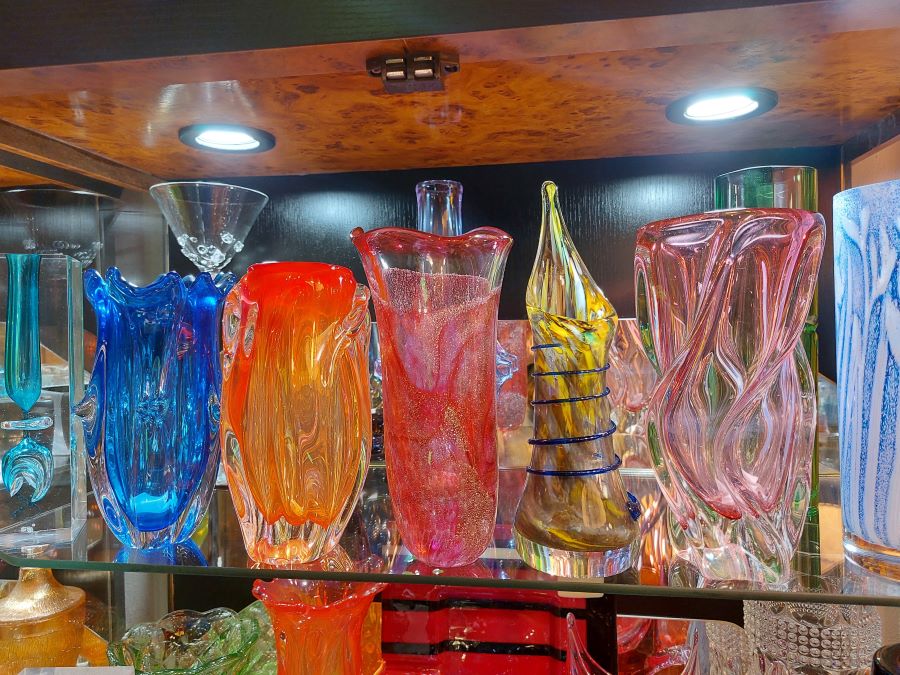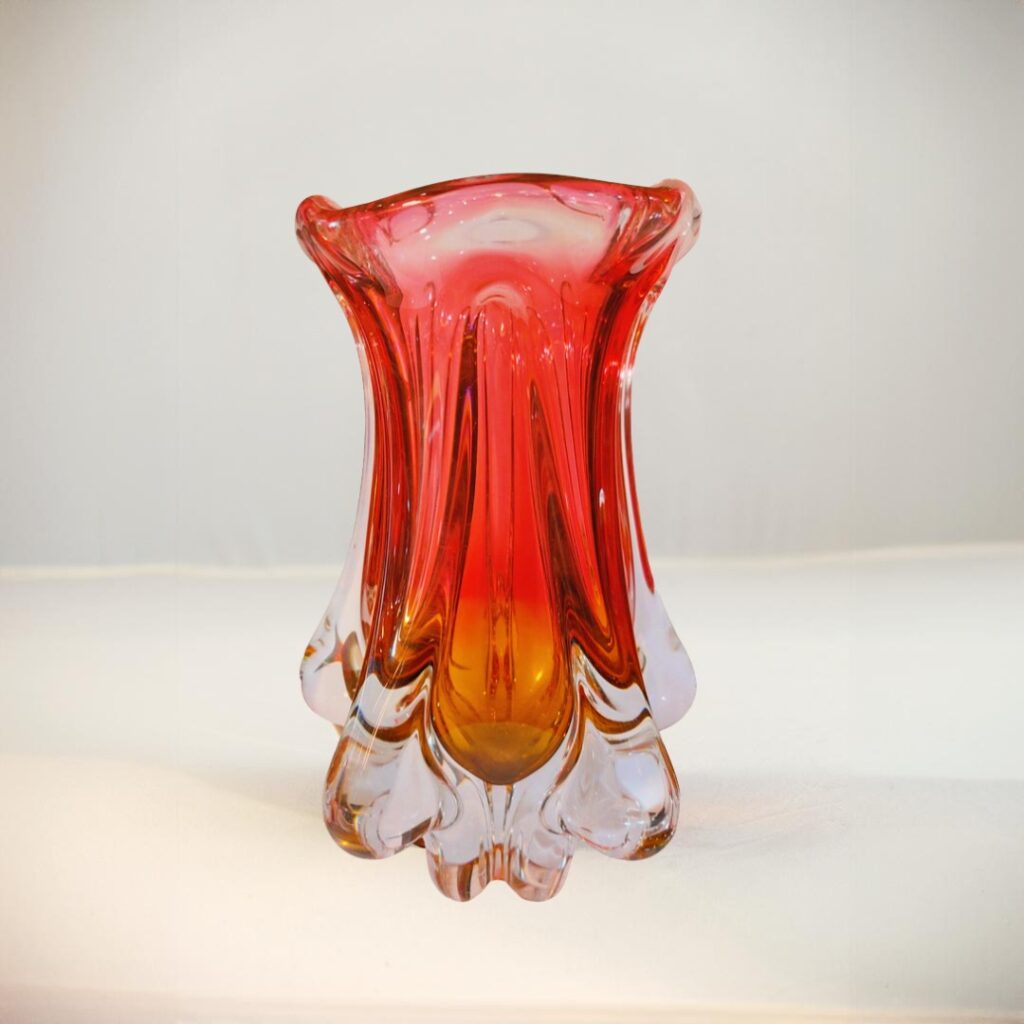The precisely engraved glass, the refraction of crystal glass, the timeless decors of art deco glass are amazing. But each of us at sometimes longs for an elegance that carries stability. As well as an originality that looks so effortless, which implies a return to basics and a certain simplicity.
Vintage metallurgical glass brings it all.
However, this simplicity of vintage metallurgical glass is far from meaning that it is easy to manufacture it or that the pieces are drab, interchangeable one after the other.

Metallurgical glass, kiln–formed glass
Vintage metallurgical glass is also synonymous with the hard work of glassmakers. This is because metallurgically shaped glass is always modelled directly by the kiln at high temperatures. At around 1200°C (2192°F) the glass starts to solidify (and thus no longer flows), but at the same time it is still nodular.
This glass is blown into the desired shapes near the kiln. Either directly on the glass blower or is blown in metal moulds. Once the basic mould is in place, the glass is then shaped again at the furnace. So it is still handmade. And even if the glassmaker has used a mould in the production of the vintage metallurgical glass, each piece becomes an original.
From this description, it would seem that all glass from an earlier time is therefore metallurgical glass. However, when we talk about vintage metallurgical glass, we are not talking – neither about crystal (which has its own specifics), nor about glass decorated later outside the glassmaker’s kiln (as cut or engraved glass), or about the forest/green glass that preceded the clear glass we are used to today.
Vintage metallurgical glass in the Czech Republic
In the Czech Republic, metallurgical glass has a rich tradition dating back to the Middle Ages. The most important area of glass production was and still is northern Bohemia, where is located a number of glassworks that continue to produce glass to this day.
In the 19th century, Bohemian glass became famous throughout Europe, and glassmakers began to experiment with new techniques and styles. The production of glass figurines, crystal glass and decorative objects also expanded at this time.
At the same time, family-run glassworks which were established by that time might still exist today, such as Moser and Rückl.
Nowdays the most in demand vintage metallugical glass are the vases from the mid-20th century.
This means from the years around and after Expo 58, which brought back the splendour and glory of Czech glassmaking. As at least some glassmakers were able to return to quality glass production.
This vintage metallurgical glass is characterised by being more massive. Mostly blown into moulds and then shaped by hand at high temperatures close by the kiln.

More about glass
Bohemian crystal glass
How to recognize antique glass
Did you find glass objects in your grandparents’ attic, did you get your hands on an object that you think might be old and valuable? Or are you playing with…









